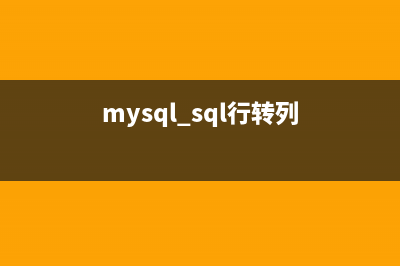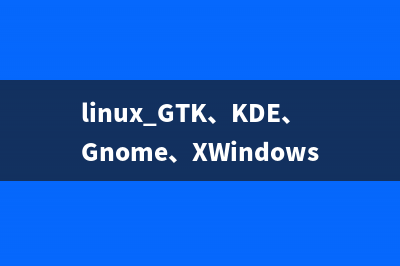欢迎来到unity学习、unity培训、unity企业培训教育专区,这里有很多U3D资源、U3D培训视频、U3D教程、U3D常见问题、U3D项目源码,【狗刨学习网】unity极致学院,致力于打造业内unity3d培训、学习第一品牌。<P> using UnityEngine; using System.Collections; </P><P>/** * @Author : <A href=" */</P><P>[RequireComponent(typeof(CharacterController))] [AddComponentMenu("Character/Character Motor")] </P><P>public class CharacterMotor : MonoBehaviour { // Does this script currently respond to input? public bool canControl = true; public bool useFixedUpdate = true; // For the next variables, @System.NonSerialized tells Unity to not serialize the variable or show it in the inspector view. // Very handy for organization! // The current global direction we want the character to move in. [System.NonSerialized] public Vector3 inputMoveDirection = Vector3.zero; // Is the jump button held down? We use this interface instead of checking // for the jump button directly so this script can also be used by AIs. [System.NonSerialized] public bool inputJump = false; [System.Serializable] public class CharacterMotorMovement { // The maximum horizontal speed when moving public float maxForwardSpeed = .0f; public float maxSidewaysSpeed = .0f; public float maxBackwardsSpeed = .0f; // Curve for multiplying speed based on slope (negative = downwards) public AnimationCurve slopeSpeedMultiplier = new AnimationCurve(new Keyframe(-, 1), new Keyframe(0, 1), new Keyframe(, 0)); // How fast does the character change speeds? Higher is faster. public float maxGroundAcceleration = .0f; public float maxAirAcceleration = .0f; // The gravity for the character public float gravity = .0f; public float maxFallSpeed = .0f; // For the next variables, @System.NonSerialized tells Unity to not serialize the variable or show it in the inspector view. // Very handy for organization! // The last collision flags returned from controller.Move [System.NonSerialized] public CollisionFlags collisionFlags; // We will keep track of the character's current velocity, [System.NonSerialized] public Vector3 velocity; // This keeps track of our current velocity while we're not grounded [System.NonSerialized] public Vector3 frameVelocity = Vector3.zero; [System.NonSerialized] public Vector3 hitPoint = Vector3.zero; [System.NonSerialized] public Vector3 lastHitPoint = new Vector3(Mathf.Infinity, 0, 0); } public CharacterMotorMovement movement = new CharacterMotorMovement(); public enum MovementTransferOnJump { None, // The jump is not affected by velocity of floor at all. InitTransfer, // Jump gets its initial velocity from the floor, then gradualy comes to a stop. PermaTransfer, // Jump gets its initial velocity from the floor, and keeps that velocity until landing. PermaLocked // Jump is relative to the movement of the last touched floor and will move together with that floor. } // We will contain all the jumping related variables in one helper class for clarity. [System.Serializable] public class CharacterMotorJumping { // Can the character jump? public bool enabled = true; // How high do we jump when pressing jump and letting go immediately public float baseHeight = 1.0f; // We add extraHeight units (meters) on top when holding the button down longer while jumping public float extraHeight = 4.1f; // How much does the character jump out perpendicular to the surface on walkable surfaces? // 0 means a fully vertical jump and 1 means fully perpendicular. public float perpAmount = 0.0f; // How much does the character jump out perpendicular to the surface on too steep surfaces? // 0 means a fully vertical jump and 1 means fully perpendicular. public float steepPerpAmount = 0.5f; // For the next variables, @System.NonSerialized tells Unity to not serialize the variable or show it in the inspector view. // Very handy for organization! // Are we jumping? (Initiated with jump button and not grounded yet) // To see if we are just in the air (initiated by jumping OR falling) see the grounded variable. [System.NonSerialized] public bool jumping = false; [System.NonSerialized] public bool holdingJumpButton = false; // the time we jumped at (Used to determine for how long to apply extra jump power after jumping.) [System.NonSerialized] public float lastStartTime = 0.0f; [System.NonSerialized] public float lastButtonDownTime = -f; [System.NonSerialized] public Vector3 jumpDir = Vector3.up; } public CharacterMotorJumping jumping = new CharacterMotorJumping(); [System.Serializable] public class CharacterMotorMovingPlatform { public bool enabled = true; public MovementTransferOnJump movementTransfer = MovementTransferOnJump.PermaTransfer; [System.NonSerialized] public Transform hitPlatform; [System.NonSerialized] public Transform activePlatform; [System.NonSerialized] public Vector3 activeLocalPoint; [System.NonSerialized] public Vector3 activeGlobalPoint; [System.NonSerialized] public Quaternion activeLocalRotation; [System.NonSerialized] public Quaternion activeGlobalRotation; [System.NonSerialized] public Matrix4x4 lastMatrix; [System.NonSerialized] public Vector3 platformVelocity; [System.NonSerialized] public bool newPlatform; } public CharacterMotorMovingPlatform movingPlatform = new CharacterMotorMovingPlatform(); [System.Serializable] public class CharacterMotorSliding { // Does the character slide on too steep surfaces? public bool enabled = true; // How fast does the character slide on steep surfaces? public float slidingSpeed = f; // How much can the player control the sliding direction? // If the value is 0.5 the player can slide sideways with half the speed of the downwards sliding speed. public float sidewaysControl = 1.0f; // How much can the player influence the sliding speed? // If the value is 0.5 the player can speed the sliding up to % or slow it down to %. public float speedControl = 0.4f; } public CharacterMotorSliding sliding = new CharacterMotorSliding(); [System.NonSerialized] public bool grounded = true; [System.NonSerialized] public Vector3 groundNormal = Vector3.zero; private Vector3 lastGroundNormal = Vector3.zero; private Transform tr; private CharacterController controller ; void Awake () { controller = GetComponent <CharacterController>(); tr = transform; } private void UpdateFunction () { // We copy the actual velocity into a temporary variable that we can manipulate. Vector3 velocity = movement.velocity; // Update velocity based on input velocity = ApplyInputVelocityChange(velocity); // Apply gravity and jumping force velocity = ApplyGravityAndJumping (velocity); // Moving platform support Vector3 moveDistance = Vector3.zero; if (MoveWithPlatform()) { Vector3 newGlobalPoint = movingPlatform.activePlatform.TransformPoint(movingPlatform.activeLocalPoint); moveDistance = (newGlobalPoint - movingPlatform.activeGlobalPoint); if (moveDistance != Vector3.zero) controller.Move(moveDistance); // Support moving platform rotation as well: Quaternion newGlobalRotation = movingPlatform.activePlatform.rotation * movingPlatform.activeLocalRotation; Quaternion rotationDiff = newGlobalRotation * Quaternion.Inverse(movingPlatform.activeGlobalRotation); var yRotation = rotationDiff.eulerAngles.y; if (yRotation != 0) { // Prevent rotation of the local up vector tr.Rotate(0, yRotation, 0); } } // Save lastPosition for velocity calculation. Vector3 lastPosition = tr.position; // We always want the movement to be framerate independent. Multiplying by Time.deltaTime does this. Vector3 currentMovementOffset = velocity * Time.deltaTime; // Find out how much we need to push towards the ground to avoid loosing grouning // when walking down a step or over a sharp change in slope. float pushDownOffset = Mathf.Max(controller.stepOffset, new Vector3(currentMovementOffset.x, 0, currentMovementOffset.z).magnitude); if (grounded) currentMovementOffset -= pushDownOffset * Vector3.up; // Reset variables that will be set by collision function movingPlatform.hitPlatform = null; groundNormal = Vector3.zero; // Move our character! movement.collisionFlags = controller.Move (currentMovementOffset); movement.lastHitPoint = movement.hitPoint; lastGroundNormal = groundNormal; if (movingPlatform.enabled && movingPlatform.activePlatform != movingPlatform.hitPlatform) { if (movingPlatform.hitPlatform != null) { movingPlatform.activePlatform = movingPlatform.hitPlatform; movingPlatform.lastMatrix = movingPlatform.hitPlatform.localToWorldMatrix; movingPlatform.newPlatform = true; } } // Calculate the velocity based on the current and previous position. // This means our velocity will only be the amount the character actually moved as a result of collisions. Vector3 oldHVelocity = new Vector3(velocity.x, 0, velocity.z); movement.velocity = (tr.position - lastPosition) / Time.deltaTime; Vector3 newHVelocity = new Vector3(movement.velocity.x, 0, movement.velocity.z); // The CharacterController can be moved in unwanted directions when colliding with things. // We want to prevent this from influencing the recorded velocity. if (oldHVelocity == Vector3.zero) { movement.velocity = new Vector3(0, movement.velocity.y, 0); } else { float projectedNewVelocity = Vector3.Dot(newHVelocity, oldHVelocity) / oldHVelocity.sqrMagnitude; movement.velocity = oldHVelocity * Mathf.Clamp(projectedNewVelocity) &#; movement.velocity.y * Vector3.up; } if (movement.velocity.y < velocity.y - 0.) { if (movement.velocity.y < 0) { // Something is forcing the CharacterController down faster than it should. // Ignore this movement.velocity.y = velocity.y; } else { // The upwards movement of the CharacterController has been blocked. // This is treated like a ceiling collision - stop further jumping here. jumping.holdingJumpButton = false; } } // We were grounded but just loosed grounding if (grounded && !IsGroundedTest()) { grounded = false; // Apply inertia from platform if (movingPlatform.enabled && (movingPlatform.movementTransfer == MovementTransferOnJump.InitTransfer || movingPlatform.movementTransfer == MovementTransferOnJump.PermaTransfer) ) { movement.frameVelocity = movingPlatform.platformVelocity; movement.velocity &#;= movingPlatform.platformVelocity; } SendMessage("OnFall", SendMessageOptions.DontRequireReceiver); // We pushed the character down to ensure it would stay on the ground if there was any. // But there wasn't so now we cancel the downwards offset to make the fall smoother. tr.position &#;= pushDownOffset * Vector3.up; } // We were not grounded but just landed on something else if (!grounded && IsGroundedTest()) { grounded = true; jumping.jumping = false; SubtractNewPlatformVelocity(); SendMessage("OnLand", SendMessageOptions.DontRequireReceiver); } // Moving platforms support if (MoveWithPlatform()) { // Use the center of the lower half sphere of the capsule as reference point. // This works best when the character is standing on moving tilting platforms. movingPlatform.activeGlobalPoint = tr.position &#; Vector3.up * (controller.center.y - controller.height*0.5f &#; controller.radius); movingPlatform.activeLocalPoint = movingPlatform.activePlatform.InverseTransformPoint(movingPlatform.activeGlobalPoint); // Support moving platform rotation as well: movingPlatform.activeGlobalRotation = tr.rotation; movingPlatform.activeLocalRotation = Quaternion.Inverse(movingPlatform.activePlatform.rotation) * movingPlatform.activeGlobalRotation; } } void FixedUpdate () { if (movingPlatform.enabled) { if (movingPlatform.activePlatform != null) { if (!movingPlatform.newPlatform) { Vector3 lastVelocity = movingPlatform.platformVelocity; movingPlatform.platformVelocity = ( movingPlatform.activePlatform.localToWorldMatrix.MultiplyPoint3x4(movingPlatform.activeLocalPoint) - movingPlatform.lastMatrix.MultiplyPoint3x4(movingPlatform.activeLocalPoint) ) / Time.deltaTime; } movingPlatform.lastMatrix = movingPlatform.activePlatform.localToWorldMatrix; movingPlatform.newPlatform = false; } else { movingPlatform.platformVelocity = Vector3.zero; } } if (useFixedUpdate) UpdateFunction(); } void Update () { if (!useFixedUpdate) UpdateFunction(); } private Vector3 ApplyInputVelocityChange (Vector3 velocity) { if (!canControl) inputMoveDirection = Vector3.zero; // Find desired velocity Vector3 desiredVelocity; if (grounded && TooSteep()) { // The direction we're sliding in desiredVelocity = new Vector3(groundNormal.x, 0, groundNormal.z).normalized; // Find the input movement direction projected onto the sliding direction var projectedMoveDir = Vector3.Project(inputMoveDirection, desiredVelocity); // Add the sliding direction, the spped control, and the sideways control vectors desiredVelocity = desiredVelocity &#; projectedMoveDir * sliding.speedControl &#; (inputMoveDirection - projectedMoveDir) * sliding.sidewaysControl; // Multiply with the sliding speed desiredVelocity *= sliding.slidingSpeed; } else desiredVelocity = GetDesiredHorizontalVelocity(); if (movingPlatform.enabled && movingPlatform.movementTransfer == MovementTransferOnJump.PermaTransfer) { desiredVelocity &#;= movement.frameVelocity; desiredVelocity.y = 0; } if (grounded) desiredVelocity = AdjustGroundVelocityToNormal(desiredVelocity, groundNormal); else velocity.y = 0; // Enforce max velocity change float maxVelocityChange = GetMaxAcceleration(grounded) * Time.deltaTime; Vector3 velocityChangeVector = (desiredVelocity - velocity); if (velocityChangeVector.sqrMagnitude > maxVelocityChange * maxVelocityChange) { velocityChangeVector = velocityChangeVector.normalized * maxVelocityChange; } // If we're in the air and don't have control, don't apply any velocity change at all. // If we're on the ground and don't have control we do apply it - it will correspond to friction. if (grounded || canControl) velocity &#;= velocityChangeVector; if (grounded) { // When going uphill, the CharacterController will automatically move up by the needed amount. // Not moving it upwards manually prevent risk of lifting off from the ground. // When going downhill, DO move down manually, as gravity is not enough on steep hills. velocity.y = Mathf.Min(velocity.y, 0); } return velocity; } private Vector3 ApplyGravityAndJumping (Vector3 velocity) { if (!inputJump || !canControl) { jumping.holdingJumpButton = false; jumping.lastButtonDownTime = -; } if (inputJump && jumping.lastButtonDownTime < 0 && canControl) jumping.lastButtonDownTime = Time.time; if (grounded) velocity.y = Mathf.Min(0, velocity.y) - movement.gravity * Time.deltaTime; else { velocity.y = movement.velocity.y - movement.gravity * Time.deltaTime; // When jumping up we don't apply gravity for some time when the user is holding the jump button. // This gives more control over jump height by pressing the button longer. if (jumping.jumping && jumping.holdingJumpButton) { // Calculate the duration that the extra jump force should have effect. // If we're still less than that duration after the jumping time, apply the force. if (Time.time < jumping.lastStartTime &#; jumping.extraHeight / CalculateJumpVerticalSpeed(jumping.baseHeight)) { // Negate the gravity we just applied, except we push in jumpDir rather than jump upwards. velocity &#;= jumping.jumpDir * movement.gravity * Time.deltaTime; } } // Make sure we don't fall any faster than maxFallSpeed. This gives our character a terminal velocity. velocity.y = Mathf.Max (velocity.y, -movement.maxFallSpeed); } if (grounded) { // Jump only if the jump button was pressed down in the last 0.2 seconds. // We use this check instead of checking if it's pressed down right now // because players will often try to jump in the exact moment when hitting the ground after a jump // and if they hit the button a fraction of a second too soon and no new jump happens as a consequence, // it's confusing and it feels like the game is buggy. if (jumping.enabled && canControl && (Time.time - jumping.lastButtonDownTime < 0.2)) { grounded = false; jumping.jumping = true; jumping.lastStartTime = Time.time; jumping.lastButtonDownTime = -; jumping.holdingJumpButton = true; // Calculate the jumping direction if (TooSteep()) jumping.jumpDir = Vector3.Slerp(Vector3.up, groundNormal, jumping.steepPerpAmount); else jumping.jumpDir = Vector3.Slerp(Vector3.up, groundNormal, jumping.perpAmount); // Apply the jumping force to the velocity. Cancel any vertical velocity first. velocity.y = 0; velocity &#;= jumping.jumpDir * CalculateJumpVerticalSpeed (jumping.baseHeight); // Apply inertia from platform if (movingPlatform.enabled && (movingPlatform.movementTransfer == MovementTransferOnJump.InitTransfer || movingPlatform.movementTransfer == MovementTransferOnJump.PermaTransfer) ) { movement.frameVelocity = movingPlatform.platformVelocity; velocity &#;= movingPlatform.platformVelocity; } SendMessage("OnJump", SendMessageOptions.DontRequireReceiver); } else { jumping.holdingJumpButton = false; } } return velocity; } void OnControllerColliderHit (ControllerColliderHit hit) { if (hit.normal.y > 0 && hit.normal.y > groundNormal.y && hit.moveDirection.y < 0) { if ((hit.point - movement.lastHitPoint).sqrMagnitude > 0. || lastGroundNormal == Vector3.zero) groundNormal = hit.normal; else groundNormal = lastGroundNormal; movingPlatform.hitPlatform = hit.collider.transform; movement.hitPoint = hit.point; movement.frameVelocity = Vector3.zero; } } private IEnumerator SubtractNewPlatformVelocity () { // When landing, subtract the velocity of the new ground from the character's velocity // since movement in ground is relative to the movement of the ground. if (movingPlatform.enabled && (movingPlatform.movementTransfer == MovementTransferOnJump.InitTransfer || movingPlatform.movementTransfer == MovementTransferOnJump.PermaTransfer) ) { // If we landed on a new platform, we have to wait for two FixedUpdates // before we know the velocity of the platform under the character if (movingPlatform.newPlatform) { Transform platform = movingPlatform.activePlatform; yield return new WaitForFixedUpdate(); yield return new WaitForFixedUpdate(); if (grounded && platform == movingPlatform.activePlatform) yield return 1; } movement.velocity -= movingPlatform.platformVelocity; } } private bool MoveWithPlatform () { return ( movingPlatform.enabled && (grounded || movingPlatform.movementTransfer == MovementTransferOnJump.PermaLocked) && movingPlatform.activePlatform != null ); } private Vector3 GetDesiredHorizontalVelocity () { // Find desired velocity Vector3 desiredLocalDirection = tr.InverseTransformDirection(inputMoveDirection); float maxSpeed = MaxSpeedInDirection(desiredLocalDirection); if (grounded) { // Modify max speed on slopes based on slope speed multiplier curve var movementSlopeAngle = Mathf.Asin(movement.velocity.normalized.y) * Mathf.Rad2Deg; maxSpeed *= movement.slopeSpeedMultiplier.Evaluate(movementSlopeAngle); } return tr.TransformDirection(desiredLocalDirection * maxSpeed); } private Vector3 AdjustGroundVelocityToNormal (Vector3 hVelocity, Vector3 groundNormal) { Vector3 sideways = Vector3.Cross(Vector3.up, hVelocity); return Vector3.Cross(sideways, groundNormal).normalized * hVelocity.magnitude; } private bool IsGroundedTest () { return (groundNormal.y > 0.); } float GetMaxAcceleration (bool grounded) { // Maximum acceleration on ground and in air if (grounded) return movement.maxGroundAcceleration; else return movement.maxAirAcceleration; } float CalculateJumpVerticalSpeed (float targetJumpHeight) { // From the jump height and gravity we deduce the upwards speed // for the character to reach at the apex. return Mathf.Sqrt (2 * targetJumpHeight * movement.gravity); } bool IsJumping () { return jumping.jumping; } bool IsSliding () { return (grounded && sliding.enabled && TooSteep()); } bool IsTouchingCeiling () { return (movement.collisionFlags & CollisionFlags.CollidedAbove) != 0; } bool IsGrounded () { return grounded; } bool TooSteep () { return (groundNormal.y <= Mathf.Cos(controller.slopeLimit * Mathf.Deg2Rad)); } Vector3 GetDirection () { return inputMoveDirection; } void SetControllable (bool controllable) { canControl = controllable; } // Project a direction onto elliptical quater segments based on forward, sideways, and backwards speed. // The function returns the length of the resulting vector. float MaxSpeedInDirection (Vector3 desiredMovementDirection) { if (desiredMovementDirection == Vector3.zero) return 0; else { float zAxisEllipseMultiplier = (desiredMovementDirection.z > 0 ? movement.maxForwardSpeed : movement.maxBackwardsSpeed) / movement.maxSidewaysSpeed; Vector3 temp = new Vector3(desiredMovementDirection.x, 0, desiredMovementDirection.z / zAxisEllipseMultiplier).normalized; float length = new Vector3(temp.x, 0, temp.z * zAxisEllipseMultiplier).magnitude * movement.maxSidewaysSpeed; return length; } } void SetVelocity (Vector3 velocity) { grounded = false; movement.velocity = velocity; movement.frameVelocity = Vector3.zero; SendMessage("OnExternalVelocity"); } // Require a character controller to be attached to the same game object <A>//@script</A> RequireComponent (CharacterController) <A>//@script</A> AddComponentMenu ("Character/Character Motor") }</P>
推荐整理分享Unity3D 第一人称控制器 C#脚本(unity3d第一人称射击游戏教程),希望有所帮助,仅作参考,欢迎阅读内容。
文章相关热门搜索词:unity3d第一人称素材,unity3d第一人称控制器框架,unity3d第一人称触发开关门,unity3d第一人称无法行动,unity3d第一人称角色控制器,unity3d第一人称角色控制器,unity3d第一人称无法行动,unity3d第一人称无法行动,内容如对您有帮助,希望把文章链接给更多的朋友!
更多内容,请访问【狗刨学习网】unity极致学院

声明:此篇文档时来自于【狗刨学习网】社区-unity极致学院,是网友自行发布的Unity3D学习文章,如果有什么内容侵犯了你的相关权益,请与官方沟通,我们会即时处理。
Unity3D优化总结 欢迎来到unity学习、unity培训、unity企业培训教育专区,这里有很多U3D资源、U3D培训视频、U3D教程、U3D常见问题、U3D项目源码,【狗刨学习网】unity极致学
Unity3D 双摇杆 c# JoyStick 实现自己的双摇杆 欢迎来到unity学习、unity培训、unity企业培训教育专区,这里有很多U3D资源、U3D培训视频、U3D教程、U3D常见问题、U3D项目源码,【狗刨学习网】unity极致学
Unity3D 动画回调方法 欢迎来到unity学习、unity培训、unity企业培训教育专区,这里有很多U3D资源、U3D培训视频、U3D教程、U3D常见问题、U3D项目源码,【狗刨学习网】unity极致学









